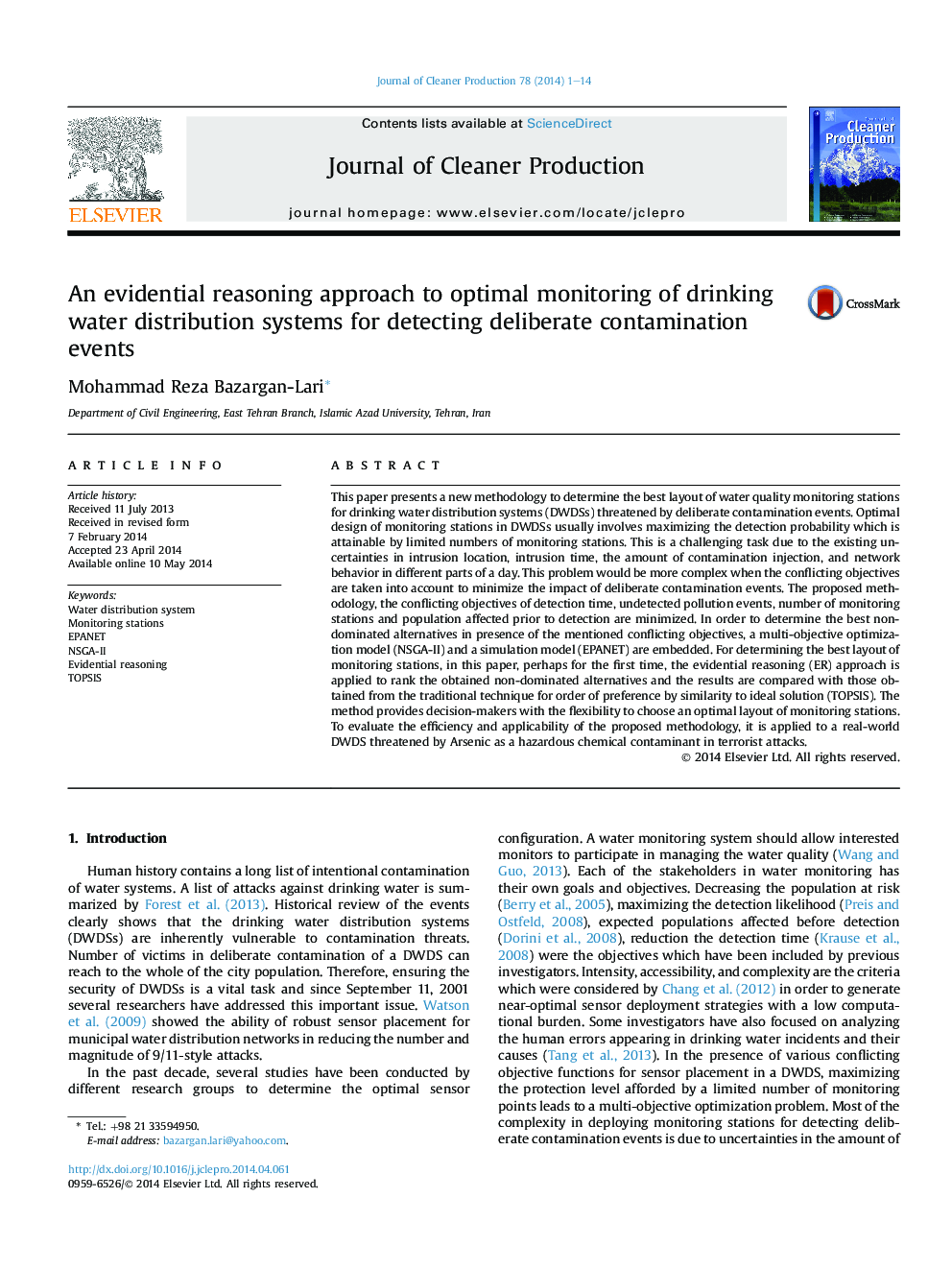| کد مقاله | کد نشریه | سال انتشار | مقاله انگلیسی | نسخه تمام متن |
|---|---|---|---|---|
| 1744868 | 1522168 | 2014 | 14 صفحه PDF | دانلود رایگان |
This paper presents a new methodology to determine the best layout of water quality monitoring stations for drinking water distribution systems (DWDSs) threatened by deliberate contamination events. Optimal design of monitoring stations in DWDSs usually involves maximizing the detection probability which is attainable by limited numbers of monitoring stations. This is a challenging task due to the existing uncertainties in intrusion location, intrusion time, the amount of contamination injection, and network behavior in different parts of a day. This problem would be more complex when the conflicting objectives are taken into account to minimize the impact of deliberate contamination events. The proposed methodology, the conflicting objectives of detection time, undetected pollution events, number of monitoring stations and population affected prior to detection are minimized. In order to determine the best non-dominated alternatives in presence of the mentioned conflicting objectives, a multi-objective optimization model (NSGA-II) and a simulation model (EPANET) are embedded. For determining the best layout of monitoring stations, in this paper, perhaps for the first time, the evidential reasoning (ER) approach is applied to rank the obtained non-dominated alternatives and the results are compared with those obtained from the traditional technique for order of preference by similarity to ideal solution (TOPSIS). The method provides decision-makers with the flexibility to choose an optimal layout of monitoring stations. To evaluate the efficiency and applicability of the proposed methodology, it is applied to a real-world DWDS threatened by Arsenic as a hazardous chemical contaminant in terrorist attacks.
Journal: Journal of Cleaner Production - Volume 78, 1 September 2014, Pages 1–14
